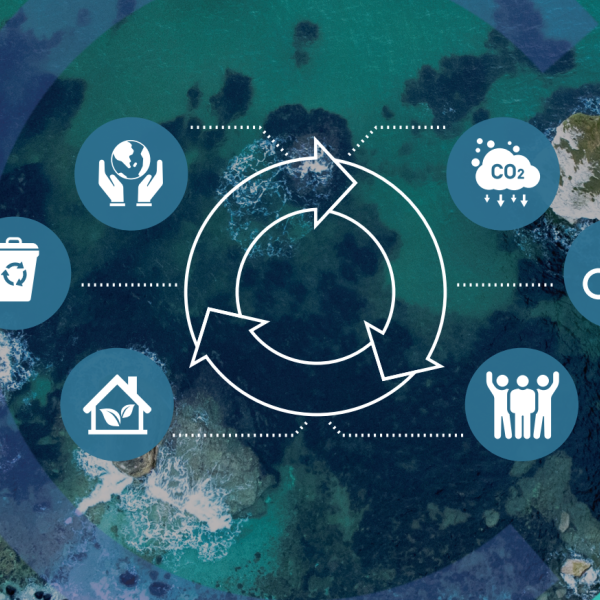
2024 Local Government Climate Action Key Performance Indicators Report
This report presents the findings of the 2024 Climate Action Key Performance Indicators (KPI) for local government. The findings are presented under the themes of mainstreaming, mitigation and adaptation, and internal behavioural change and capacity building.
Executive Summary
This report presents the findings of the 2024 Climate Action Key Performance Indicators
(KPI) for all local authorities.
Mainstreaming
1. Climate Action Staff
- Climate Action Co-ordinators and Climate Action Officers:
- 31 local authorities had Climate Action Co-ordinators in place at the end of 2024 and 30 local authorities had Climate Action Officers in place.
- 30 Climate Action Co-ordinators were full-time, and one was part-time.
- All 30 Community Climate Action Officers were full-time.
- Community Climate Action Officers:
- 31 local authorities had Community Climate Action Officers in place at the end of 2024.
- 29 local authorities had full-time officers in place and two had part-time officers.
2. Climate Action Teams (CATs)
- 2024 was the first year all local authorities had their CATs up and running at year end.
- More CAT meetings took place in 2024 compared to previous years. 122 meetings were held by CATs in 2024, 95 in 2023, 116 in 2022 and 113 in 2021.
- The number of staff participating in CATs increased each year since 2021 with a high in 2024 of 823. The figure was 647 in 2023, 616 in 2022 and 544 in 2021.
- There was a drop in the number of CAT members who had participated in climate action training. The figure dropped to 392 in 2024 from 436 in 2023, 453 in 2022 and 413 in 2021.
- 21 local authorities had CAT sub-groups in place to assist in the delivery and oversight of climate action implementations at the end of 2024.
- 163 meetings were held by the CAT sub-groups during 2024, similar to 2023 when 164 meetings were held. Less meeting were held in 2022 and 2021 with 154 and 105 meetings being held respectively.
Mitigation and Adaptation
3. Active Travel
- The NTA identified 1,012 projects that were active or completed during 2024. This was an increase from 1,001 projects in 2023.
- 153 of the projects had been completed during 2024, 253 were under construction and 606 were at design stage.
- €113 million investment was made in Active Travel in 2024.
- 181km of cycling/pedestrian infrastructure was added in 2024.
4. Social Housing Retrofit Energy Savings
- 2,634 social houses were retrofitted in 2024 under the Local Authority Retrofit Programme, the largest number so far. This brings the total number of houses retrofitted since 2022 to 7,362.
- 93% of houses retrofitted in 2024 had a BER B2 or above and 6% had a cost optimal BER.
- 91% of retrofitted houses had heat pumps installed in 2024, compared with 90% in 2023 and 68% in 2022.
- MWh/Yr Energy savings under the Programme increased by 37,712MWh/Yr in 2024 bringing the total annual savings as a result of retrofitting 7,362 houses to 103,329MWh/Yr. This equates to the annual energy requirement needed to run more than 6,000 houses.
- Annual carbon emissions reductions of 10,360 tCo2/Yr were also reported in 2024 bringing the total for the three years to 29,336 tCo2/Yr.
5. Local Authority Greenhouse Gas Emissions
- The SEAI’s 2023 data detailed a reduction of 9.6% from the Greenhouse Gas baseline for thermal and transport (up from 6.7% in 2022), and a reduction of 33.9% when electricity was added (up from 25.4% in 2022).
6. Local Authority Climate Action Plans (LA CAPs)
- 2024 was the first year LA CAPs were in place. 3,951 actions were identified across the 31 LA CAPS.
- By year-end 178 (5%) of actions were completed, 1,152 (29%) were completed but were recurring so commenced again, 1,779 (45%) were in progress, and 842 (21%) had not started.
7. Emergency Weather Events
- 254 Severe Weather Emergency Response team meetings were held during 2024 compared with 272 in 2023 and 199 in 2022.
- There were 133 Severe Weather Emergency Response Plans activated during 2024, 168 in 2023 and 126 in 2021.
- Most emergency plan activations were triggered by wind/coastal wind events, accounting for 56% of activations in 2024, 37% in 2023 and 48% in 2022.
- The next most frequent weather event that resulted in plan activations was rain. Rain events accounted for 27% of plan activations in 2024, down from 32% in 2023 and 29% in 2022.
Internal behavioural change and capacity building
8. Climate action training
- The number of climate action training places being access by staff and elected members dropped in 2024 to 2,825 from 8,965 in 2023, 3,735 in 2022 and 13,277 in 2021.
9. SME support
- There was a significant increase in the number of SMEs participating in the LEO Green for Business programme.
- 1,016 businesses participated in 2024 compared with 554 in 2023, 413 in 2022 and 293 in 2022. In total 2,276 SMEs have participated in the programme since its launch in 2021.
10. Community Climate Action Programme
- 683 projects had been approved for funding under Strand 1 and 1a of the Community Climate Action Programme in 2024.
- 42% (285) were classified as small projects, 36% (244) were medium projects, and 23% (154) were large projects.
- 12% (81) of projects had been completed by year-end, 52% (353) were in progress and 36% (249) had been approved.
Download the full report
Download the full report